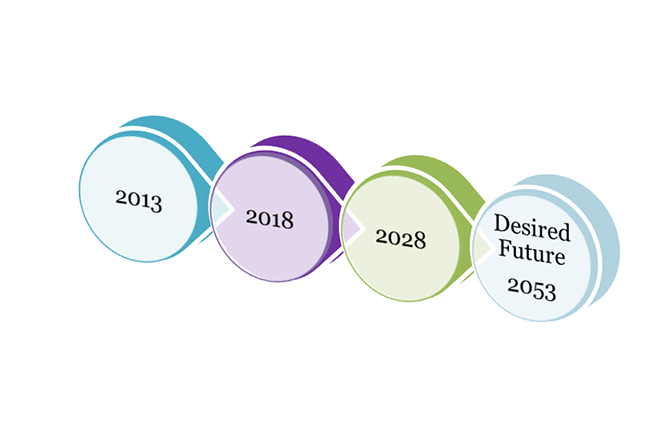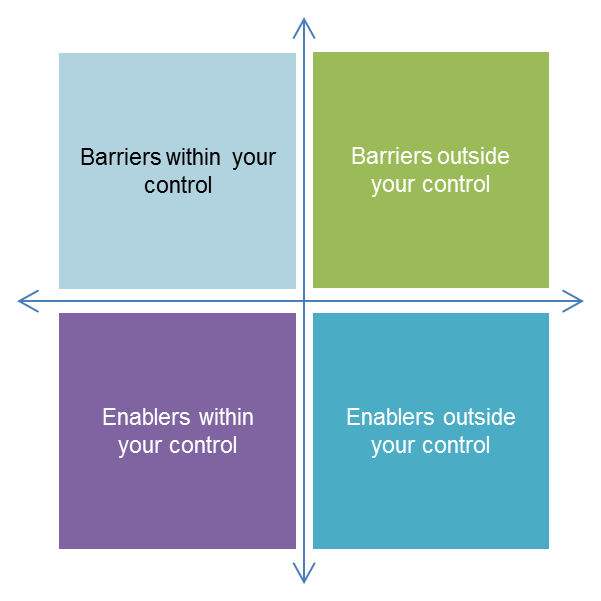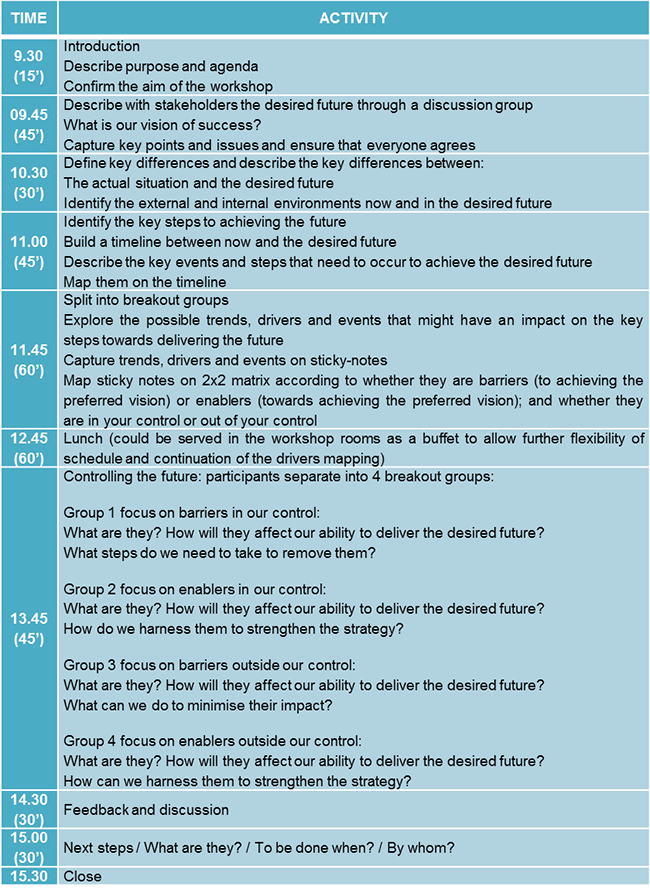4.3.11 BACKCASTING


The backcasting technique is very useful to develop a normative scenario.
Instead of starting as is usual from the present situation, the backcasting approach takes its starting point from a future situation and designs possible paths back to the present to achieve the desired future. This desired future is described by a text with qualitative and/or quantitative goals.
To do this, the time period until the point in time identified in the future is divided, ideally, into 3 time units of 2, 5 or 10 years. Each time unit corresponds to a step for which it is necessary to identify those things that could prevent reaching the desired future state.
Here, the term “scenario” covers both the images of the future and the trajectory leading back to the present. The conditions needed to achieve the desired future can be defined during a workshop by asking to stakeholders “what shall we do today to get there?”. Thereby, backcasting can be used to test different combinations of policy options that can feature new future conditions. As a participatory process, backcasting can be used to generate debate over alternative and challenging futures [Holmberg and Robert, 2000].

8 steps of a Backcasting exercise employed to build a normative scenario:
1 >>> Describe a desired future
2 >>> Define key differences between the desired future and today
3 >>> Identify key steps and actions needed to achieve the desired future
4 >>> Identify drivers and trends, which could impact on your ability to achieve the desired future
5 >>> Map the drivers and trends onto a 2x2 matrix according to whether they are barriers (to achieving the desired future) or enablers (towards achieving the desired future); and whether they are in your control or out of your control

6 >>> Discuss what you need to do to ensure that barriers inside your control are minimised and that enablers inside your control are optimised
7 >>> Explore how to get around barriers outside your control
8 >>> Define performance indicators that will help you monitor progress towards your desired future
Time: 4 hours to 1 day
Technical level: 2/4
Advantages: good way to create strategic purpose.
Limits: it may be difficult for participants to plan for the future.
Resources needed: materials (pencils, brown-paper, flip-charts etc).
Advice: conduct a preliminary PESTLE analysis to identify the drivers of change.

Example of backcasting workshop’s agenda [While, 2010]


Link

